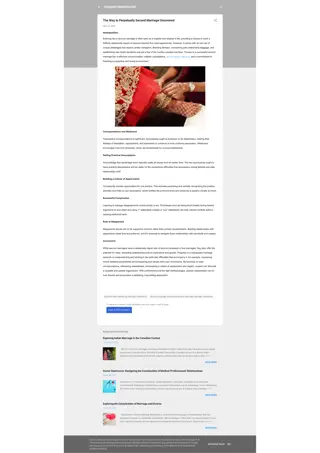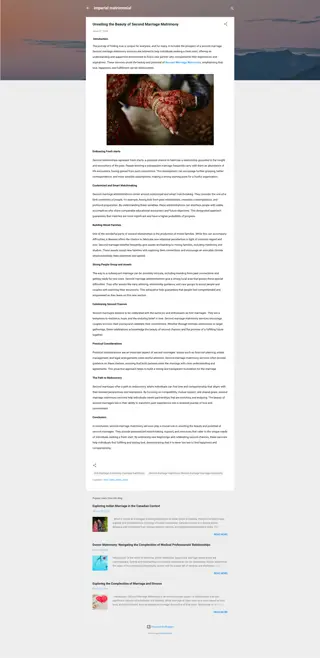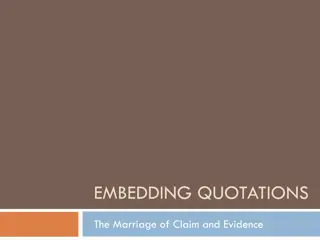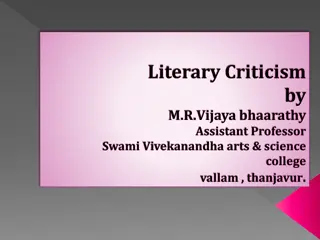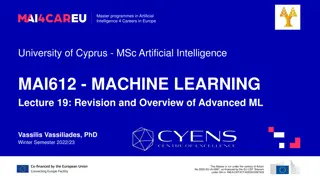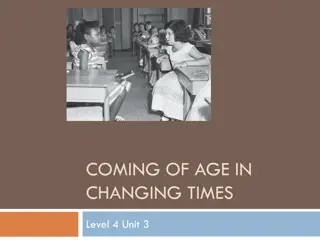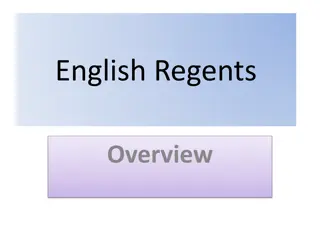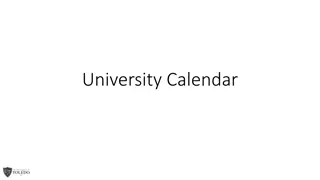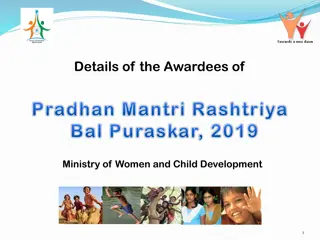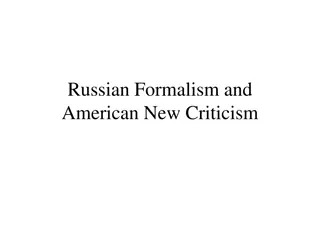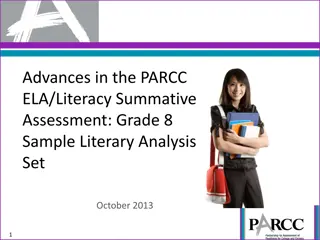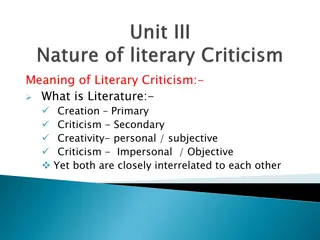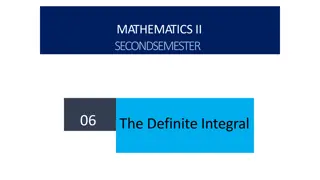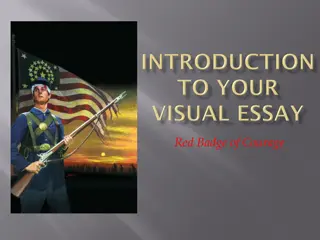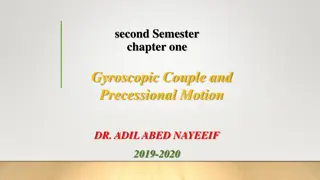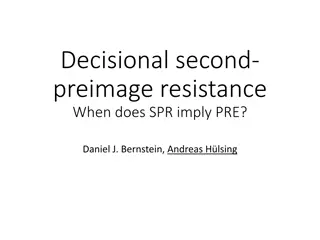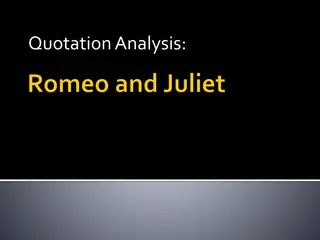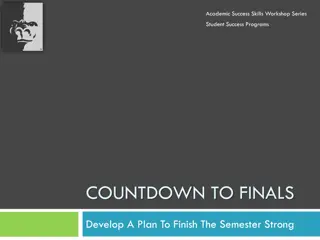Master Literary Analysis for Second Semester Success
Enhance your literary analysis skills for the second semester with tips on effective use of literary devices, grammar conventions, citations, earning a top score, and understanding sophisticated definitions. Learn how to craft strong examples and quotes, avoid common pitfalls, and ensure proper formatting and language usage for academic success.
- Literary Analysis
- Academic Writing
- Sophisticated Definitions
- Grammar Conventions
- Citation Guidelines
Download Presentation

Please find below an Image/Link to download the presentation.
The content on the website is provided AS IS for your information and personal use only. It may not be sold, licensed, or shared on other websites without obtaining consent from the author. Download presentation by click this link. If you encounter any issues during the download, it is possible that the publisher has removed the file from their server.
E N D
Presentation Transcript
Lit Devices Tips and Tricks for Second Semester
Grammar/Conventions Avoid O Contractions (isn t, won t) O Wishy washy language (seems, could mean) O Sentence fragments (Fitzgerald is articulate. Although Tom isn t) O Comma splices (Nick describes her, he also criticizes her) Include O Quotations around specific diction (The word giggled ) O Italics for novels; quotations for poems O Commas before quotes Commas before quotes O Subject/verb agreement O Pronoun/antecedent agreement O The group want/wants its/their money.
Citations O Under the example, include proper MLA citation for the text O Don t have it? Find it! O Writer s Inc. (or OWL@Purdue) can show you how O Incorrect citation will will earn you a zero!
What earns a 10 O Sophisticated definition O Strong example of the term (not a stretch) O ONE SENTENCE summary. Two sentences of context. O Use of the term as an active verb when applicable (active voice always!) O Explicit connection of the specific example (quoted in the function discussion) to the overall purpose of its presence. (theme? Character complexity? Ambiguity?) O Other references or quotes to support this analysis O STRONG diction and varied syntax
How do I earn a 10 O Start with the end in mind, not the term. O Think backwards what are you trying to prove? (Create a thesis for this body paragraph) O Stay focused!!! Prove the term s function that s it! Be succinct and effective. O Use specific details and word choice say what you mean in nuanced language O Avoid: very significant, important, interesting, does this very well
Sophisticated Definition O Cacophony: Cacophony: The use of harsh, unpleasant, or discordant sounds, usually achieved through the use of words with sharp, harsh, hissing, and unmelodious sounds, primarily those of consonants, to achieve desired results.
Strong Example Symbol: Symbol: In the simplest sense, a symbol is anything that stands for or represents something else beyond it often an idea conventionally associated with it. The term symbolism refers to the use of symbols, or to a set of related symbols.
Strong Example Example: Example: '"I got a tree on my back and a haint in my house, and nothing in between but the daughter I am holding in my arms. No more running--from nothing. I will never run from another thing on this earth. I took one journey and I paid for the ticket, but let me tell you something, Paul D Garner: it cost too much! Do you hear me? It cost too much (18). Morrison, Toni. Beloved: A Novel. New York: Vintage International, 2004. Print.
Context Function: Function: In order to emphasize Sethe s trauma, Toni Morrison, in her text Beloved, employs the use of a symbol in her text. Context: Context: As Sethe is reuniting with Paul D, she mentions the scar on her back
Concept Concept: Concept: I got a tree on my back and a haint in my house, and nothing in between but the daughter I am holding in my arms. No more running--from nothing. I will never run from another thing on this earth. I took one journey and I paid for the ticket, but let me tell you something, Paul D Garner: it cost too much! Do you hear me? It cost too much (18). Further along in the novel, we learn that Amy Denver identified the whiplashes on her back as a tree. This symbolizes Sethe s growing and constant pain, but also her strength as a survivor, mother, and woman.
Connection Connection: Connection: Morrison s vivid description of the tree scar on Sethe s back allows readers to grapple with the pervasive trauma Sethe has experienced. On the one hand, the scar is horrific and gruesome; it reflects the horrific and gruesome torture she endured in slavery. On the other hand, it is a beautiful tree a representation of all the strength and wisdom she carries with her due to those horrible experiences. Morrison s novel demonstrates that slavery, an abomination in American history and on the lives of the people who endured it, is also a testament to the fortitude of people who survived and carried on in spite of it.
Symbol: Symbol: In the simplest sense, a symbol is anything that stands for or represents something else beyond it often an idea conventionally associated with it. The term symbolism refers to the use of symbols, or to a set of related symbols. Example: Example: '"I got a tree on my back and a haint in my house, and nothing in between but the daughter I am holding in my arms. No more running--from nothing. I will never run from another thing on this earth. I took one journey and I paid for the ticket, but let me tell you something, Paul D Garner: it cost too much! Do you hear me? It cost too much (18). Morrison, Toni. Beloved: A Novel. New York: Vintage International, 2004. Print. Function: Function: In order to emphasize Sethe s trauma, Toni Morrison, in her text Beloved, employs the use of a symbol in her text. As Sethe is reuniting with Paul D, she mentions the scar on her back I got a tree on my back and a haint in my house, and nothing in between but the daughter I am holding in my arms. No more running--from nothing. I will never run from another thing on this earth. I took one journey and I paid for the ticket, but let me tell you something, Paul D Garner: it cost too much! Do you hear me? It cost too much (18). Further along in the novel, we learn that Amy Denver identified the whiplashes on her back as a tree. This symbolizes Sethe s growing and constant pain, but also her strength as a survivor, mother, and woman. Morrison s vivid description of the tree scar on Sethe s back allows readers to grapple with the pervasive trauma Sethe has experienced. On the one hand, the scar is horrific and gruesome; it reflects the horrific and gruesome torture she endured in slavery. On the other hand, it is a beautiful tree a representation of all the strength and wisdom she carries with her due to those horrible experiences. Morrison s novel demonstrates that slavery, an abomination in American history and on the lives of the people who endured it, is also a testament to the fortitude of people who survived and carried on in spite of it.
Punctuality O On time means O Submitted to Turnitin.com by Thursday evening 11:59pm O Printed copy in my possession by Friday 12:50pm O Definition, Example, Citation, and Function *Failure to adhere to any of the above will result in a LATE submission and will not receive scoring*
Tips O Terms and Texts O Any term from the list challenge yourself! O Any text from THIS semester novels, poems, essays, etc.





